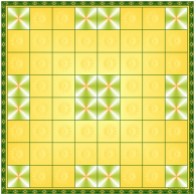Ashtapada
( Page taken from https://a4games.company

Ancient games are revealing snapshots into the past. They share enjoyments, activities, developments, and beliefs of the people who played them. Originating in India, Ashtapada, meaning eight square, refers to both the game board’s dimensions and the game played upon the sixty-four squares. The game is of a simple race type and shares that pleasure was found by a leisurely method of play.
Ashtapada is possibly the first game played on an 8×8 game board in India. It is one of the oldest board games of the region. Later, and believed to originate in India, this size of board would be used to create the popular and skilled game of Chess. Shaturanga, the precursor to chess, was established using this board.
Ashtapada is seen mentioned in the earliest known list of games as one in which the Gautama Buddha wouldn’t play. Including other favourite pastimes enjoyed by people of the period, this interesting record dates Ashtapada back to around the 5th or 6th century BC; since Ashtapada must have been played during his life to have been acknowledged in the Buddha’s account.
Besides being an 8×8 squared board, the board consists of certain marked spaces which denote safety, entry, or exit for players. The four corners, the four central squares, and two centre squares on each side are crosscut, like shown. Originally, two, three, or four people can play the game. If two players are playing, each would sit on one side of the board and enter their two pieces onto the centre crosscut squares along the outer side. The object of the game is to be the first player to enter and exit both his pieces. A player exits his piece once reaching the centre squares.
The path of play begins by moving along the outer edge, counterclockwise, and then moving clockwise around the middle squares only to then turn and move counterclockwise to meet the centre. Movement for the game is determined by four sticks.



